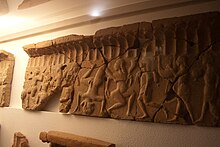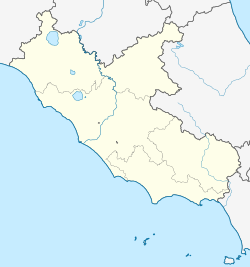 Architectural terracotta from Acquarossa | |
| Location | Comune di Viterbo, Lazio, Italy |
|---|---|
| Region | Lazio |
| Type | Settlement |
| History | |
| Periods | Archaic |
| Cultures | Etruscan |
| Site notes | |
| Excavation dates | 1960s-1970s |
| Archaeologists | Istituto Svedese di Studi Classici a Roma |
| Website | |
Acquarossa or Fosso Acqua Rossa is the modern name of the location of an ancient Etruscan settlement abandoned or destroyed in the second half of the sixth century BC. [1] Located near Viterbo, in Etruria, [2] was excavated by the Swedish Institute at Rome in the 1960s and 1970s. [3] An elite complex similar to the Regia in Rome was excavated at the site. [4] [5] [6]

